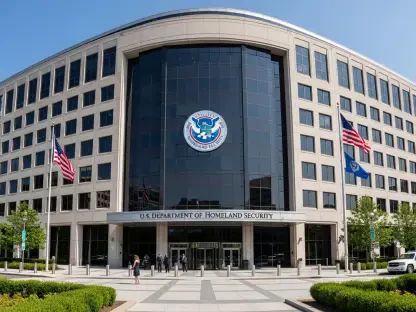Exploring the Legal Challenge to Trump’s Tariffs
In a landmark case before the US Supreme Court, the sweeping tariffs imposed by President Donald Trump have ignited a fierce debate over the limits of executive authority, raising critical questions about the separation of powers in American governance. These tariffs, affecting imports from nearly all US trading partners, were enacted under the International Emergency Economic Powers Act (IEEPA), a law traditionally reserved for national emergencies. The central issue at stake is whether such actions encroach on Congress’s constitutional power over taxation and trade, challenging the very foundation of checks and balances. This case has captured national attention due to its potential to redefine presidential authority in economic policy.
The Supreme Court’s scrutiny of this matter goes beyond mere legal interpretation, touching on fundamental questions about the balance between branches of government. Justices from across the ideological spectrum have expressed concerns about whether Trump’s use of tariffs represents an overreach, potentially setting a precedent for future executive actions. The outcome could reshape not only domestic economic strategies but also the United States’ position in global trade networks, making this a pivotal moment in legal and political history.
The stakes are immense, with implications that ripple through constitutional law, economic stability, and international relations. A decision in this case could either reinforce congressional dominance over trade policy or affirm an expansive view of executive power during perceived emergencies. As the nation watches, the resolution of this dispute promises to influence how economic tools like tariffs are wielded by future administrations, impacting everything from consumer prices to diplomatic ties.
Background and Significance of the Tariff Controversy
Trump’s administration implemented extensive tariffs on imported goods, citing trade deficits and national security threats as justification under the IEEPA. This law, enacted in 1977, was originally designed to grant presidents authority to address national emergencies through measures like sanctions or asset freezes, not through broad tariff impositions. The unprecedented scale of these tariffs, affecting a wide array of products and countries, has raised questions about whether the executive branch is stretching the statute beyond its intended purpose.
Historically, the IEEPA has been a tool for targeted economic responses, not a mechanism for overarching trade policy. The tariffs, however, have generated billions in revenue—$89 billion to date—with projections estimating trillions over the coming years. This financial impact, coupled with the risk of a global trade war due to retaliatory measures from other nations, underscores the economic significance of the controversy. The tension between legal authority and economic consequences forms a critical backdrop to the ongoing legal battle.
Beyond economics, the geopolitical fallout adds another layer of complexity to the issue. Trump’s tariffs have strained relationships with key trading partners, leading to market volatility and uncertainty in international commerce. Combined with the constitutional implications of potentially undermining congressional authority, this case stands as a test of checks and balances. Its resolution could either curb executive overreach or embolden future presidents to use emergency powers in expansive, unforeseen ways.
Judicial Scrutiny and Legal Arguments
Methodology of the Supreme Court Hearing
The Supreme Court hearing on Trump’s tariffs featured rigorous questioning of US Solicitor General D. John Sauer by both conservative and liberal justices, reflecting a shared concern over executive authority. The session delved into the constitutional framework, particularly the assignment of taxation and trade regulation powers to Congress under Article I. Justices examined whether the IEEPA, as interpreted by the administration, grants the president unilateral authority to impose tariffs without explicit legislative approval.
A key focus of the hearing was the scope of the IEEPA itself, a statute meant for emergency economic measures rather than sustained trade policy. The justices pressed Sauer on historical applications of the law, seeking precedents that might justify tariffs as a form of emergency regulation. Opposing counsel, including Neal Katyal representing affected businesses and several states, argued that such an interpretation distorts the law’s original intent, emphasizing the economic harm caused to American industries by these tariffs.
The methodology of the hearing also included exploring broader legal doctrines, such as the separation of powers and the limits of delegated authority. Justices referenced past Supreme Court rulings to frame their inquiries, aiming to determine if the current use of tariffs aligns with constitutional norms. This systematic approach highlighted the court’s intent to balance emergency powers with legislative oversight, ensuring that no single branch dominates economic policymaking without clear justification.
Key Findings from the Hearing
Bipartisan skepticism emerged as a dominant theme during the Supreme Court session, with justices like Chief Justice John Roberts and Justice Elena Kagan questioning whether Trump’s tariffs constitute an overreach of executive power. Roberts emphasized that taxation remains a core congressional function, challenging the notion that the IEEPA could override this authority. Kagan echoed concerns about the expansive nature of the tariffs, suggesting they lack a direct connection to the emergency powers envisioned by the statute.
A significant point of contention was the applicability of the “major questions doctrine,” which mandates clear congressional authorization for executive actions of vast economic or political significance. Several justices raised doubts about whether the IEEPA provides such clarity for tariffs that apply broadly across products and nations. This legal principle, recently invoked in other high-profile cases, became a focal point for assessing whether the administration’s actions exceed permissible bounds.
Historical precedents also played a role in the justices’ analysis, with references to past executive actions like President Nixon’s tariffs in the early 1970s. However, doubts persisted about equating those limited measures with Trump’s comprehensive tariff regime. The consensus among the bench appeared to lean toward concern that interpreting the IEEPA to include tariff authority might erode legislative power, potentially creating a dangerous precedent for future executive overreach in economic matters.
Implications of the Case
The legal implications of this case could fundamentally alter the balance of power between Congress and the presidency, particularly in the realm of trade and taxation policy. A ruling against the tariffs might reassert congressional dominance, requiring explicit legislative approval for such economic measures. This outcome would serve as a check on executive authority, ensuring that emergency powers are not misused to enact long-term policy without oversight.
Economically, the tariffs have already had a profound impact, with collections amounting to $89 billion and projections of trillions in revenue over the next decade. A decision to limit or overturn these tariffs could disrupt federal revenue streams, affecting budget planning and economic forecasts. Conversely, upholding the tariffs might exacerbate trade tensions, further increasing costs for American consumers and businesses caught in the crossfire of retaliatory measures from other countries.
On a broader scale, the societal and geopolitical effects are equally significant. Strained international relations, fueled by tariff disputes, have already led to market instability and diminished trust among global partners. The Supreme Court’s decision could either mitigate these tensions by curbing unilateral tariff actions or intensify them by affirming executive power to reshape trade dynamics. The ripple effects of this ruling will likely influence diplomatic strategies and economic stability for years to come.
Reflection and Future Directions
Reflection on the Legal Debate
Balancing executive emergency powers with congressional authority presents a complex challenge, as evidenced by the diverse concerns raised by Supreme Court justices. While some focused on the historical intent of the IEEPA to limit presidential overreach, others worried about the practical implications of granting tariff authority without clear legislative backing. This dichotomy reflects the difficulty of applying a 1970s legal framework to modern economic crises that transcend traditional emergency definitions.
Interpreting the IEEPA’s scope in today’s context poses additional hurdles, as global trade and economic interdependence have evolved significantly since the law’s inception. The justices’ varied perspectives highlight the tension between preserving constitutional checks and addressing urgent policy needs through executive action. This debate underscores the need for a nuanced understanding of how emergency powers should adapt to contemporary challenges without undermining democratic principles.
The ideological composition of the court, despite its conservative majority, did not appear to predetermine the outcome, given the bipartisan nature of the skepticism expressed. This cross-ideological concern suggests that the decision may hinge on legal principles rather than political alignment. Such a dynamic offers a rare glimpse into how deeply rooted constitutional issues can unify judicial perspectives, even in a polarized era.
Future Directions
Future legal and policy research should prioritize clarifying the boundaries of emergency economic powers under the IEEPA to prevent ambiguity in presidential authority. Scholars and lawmakers could explore case studies of past emergency declarations to identify patterns of overreach or appropriate use, informing more precise guidelines. Such studies might help establish benchmarks for what constitutes a national emergency in the economic sphere, reducing the risk of misapplication.
Legislative reforms represent another critical avenue for addressing these issues, with potential proposals to explicitly define presidential authority over tariffs. Congress could consider amendments to the IEEPA that delineate specific economic tools available during emergencies, ensuring that broad trade policies require legislative consent. This approach would strengthen oversight while maintaining flexibility for genuine crises, safeguarding the separation of powers.
Additionally, research into the long-term economic and geopolitical impacts of sustained tariff policies is essential for understanding their broader consequences. Analyzing data on trade volumes, consumer prices, and international alliances could provide insights into how tariffs reshape global systems over time. This knowledge would equip policymakers with evidence to craft balanced strategies that mitigate harm while addressing legitimate national interests.
Concluding Thoughts on Executive Power and Tariffs
The legal challenge to Trump’s tariffs marked a defining moment in the ongoing struggle to delineate executive authority, with the Supreme Court grappling over profound questions of constitutional balance. Bipartisan concerns among justices signaled a collective unease about the potential erosion of congressional power, while the staggering economic impact—billions in revenue and a looming global trade war—underscored the real-world stakes. The case ultimately stood as a test of whether emergency powers could justify sweeping trade policies without legislative endorsement.
Looking ahead, actionable steps emerged as vital to preventing similar controversies. Congress should prioritize drafting clear statutes that limit the scope of emergency economic powers, ensuring that tariffs and similar measures require explicit approval. Legal scholars and policymakers must collaborate to update frameworks like the IEEPA, aligning them with modern trade realities. Finally, fostering international dialogue to address trade disputes collaboratively could reduce the reliance on unilateral tariffs, paving the way for more stable global economic relations.









